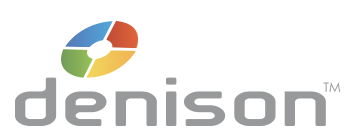What role does technological innovation play in the organizational culture?
Across many industries, talk of “disruptive technology” seems to be a nearly constant topic of conversation. Disruption is nothing new. By this, we’re referring to the way in which innovations change the way things are done. They shake things up and may make some jobs and even industries obsolete, but open the way for new ones at the same time. It’s a story as old as the invention of the wheel or the printing press. With today’s rate of change organizations must continue to evolve, with change becoming a core competency if they expect to survive.
Even so, changes in technology do not affect every industry equally. Some resist change, almost by design. (After all, “new” doesn’t necessarily mean “better.”) In many of the industries at the heart of new technology, we are seeing an emphasis on knowledge, expertise, creativity and performance. The competition is intense, and what is emerging is a form of meritocracy, with emphasis on ability and talent. People have to work harder to stay relevant. With so much change happening so quickly, how should organizations—and their cultures—respond?
Do meritocracies stifle engagement?
Possibly one of the biggest industry disruptors of our day, Amazon, is also the poster child for what has been described as an intense, meritocratic–like culture. As with many cultures, the practices and behaviors behind this disruptive organization can be traced to their CEO, Jeff Bezos. He has been described as someone who believes that bureaucracy and harmony are counter-productive. For whom frugality is important and who believes that independent thought prevails over ‘group think’. He also believes that you should ignore opinions and focus on data.
The result is an organization in which conflict and confrontation is seen as healthy. Your working relationships with your colleagues are less important than your personal contributions to the company. Employees have described the culture as bruising, peculiar, innovative, punishing, and thrilling. The culture is reinforced through things such as electronic monitoring, intense Business Reviews, the ‘Anytime Feedback Tool’, the two-pizza rule (to keep teams smaller and more productive) and the ‘Doors as Desktops’ to acknowledge the creativity and frugality shown by the founder who used an old door placed flat on 2 wooden horses to use as a desktop in his garage.
Whether bruising or thrilling, such an environment can work for people who are aware of the beliefs and values that drive the culture when they start. Further, it would be poor practice for other leaders and employers to think that what works for Jeff Bezos will work equally for them. Amazon attracts a specific type of employee, and not all of them stay with the company for long. Some thrive, others burnout.
Other organizations drive success in different ways. They believe that stress can stifle creativity as much as competition can fuel it, that teamwork does not always result in group think, and that not all achievements can be traced back to an individual.
How should organizations respond?
As destabilizing as technological change can be, it opens new opportunities for organizations to adapt and thrive. It’s no coincidence that we devote an entire quadrant of the Denison Model to Adaptability. Organizations that fear change and remain stagnant wither as their competitive edge dulls. By contrast, those who can anticipate and respond to shifts in their environment are less likely to disappear at the hands of a disruptor.
This can be true on a personal level as well as on an organizational one. Individuals who do not adapt well to new technologies soon find themselves out of step with the business and their colleagues. However, another key quadrant in the Denison Model is Involvement. Organizations can do much to build a culture which encourages adaptability on both the cultural and individual level by empowering individual and team action and involving the workforce in the changes they are trying to implement.
The Denison Organizational Culture Survey can offer important insights regarding how well positioned your organization is to anticipate and respond to change. Among the measures within the Model are ‘Organizational Learning’ – the extent to which organizations and individuals learn from failures and successes; ‘Creating Change’ – capturing how people perceive the change capabilities within the company; ‘Empowerment’ – assessing the extent to which individuals feel they can make a positive impact; and ‘Capability Development’ – looking at whether the skills and capabilities of the workforce are keeping up with the marketplace. If you would like to see how your organization performs according to these measures, you are welcome to try our survey demo y contact us for consultation. Are you ready for disruption?







